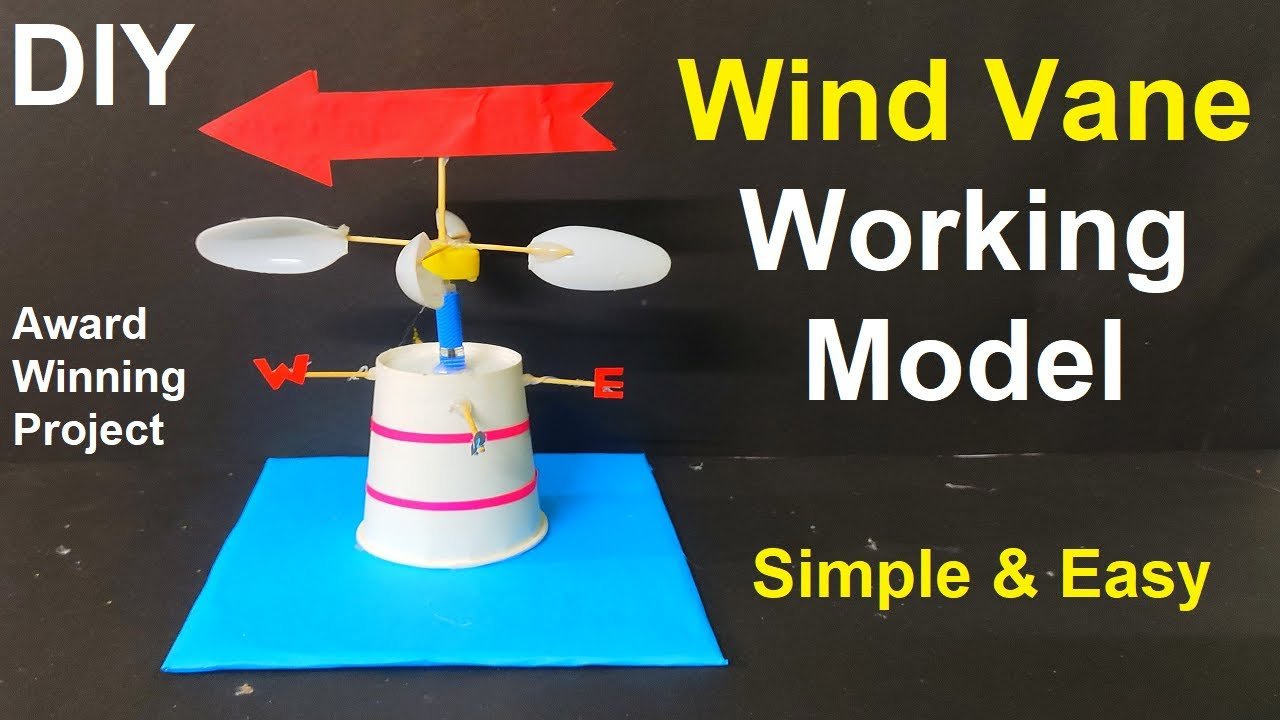Creating a wind vane working model for a science exhibition using a paper cup, plastic spoons, chopsticks, and a pencil with a sharpener is a fantastic idea! Here’s a step-by-step guide to making it:

Materials Needed:
- Paper cup
- Plastic spoons (4-8)
- Chopsticks (2)
- Pencil with sharpener
- Glue or adhesive
- Scissors
- Marker or pen
- Ruler
- String (optional)
- Decorative materials (optional)
Step by Step Video Instructions on Wind vane:
1. Prepare the Base:
- Start by placing the paper cup upside down on a flat surface. This will serve as the base of your wind vane.
2. Attach the Chopsticks:
- Take one chopstick and insert it vertically into the center of the paper cup. This will be the axis around which the wind vane rotates.
- Use glue or adhesive to secure the chopstick in place at the bottom of the cup.
- Optionally, you can reinforce the attachment by wrapping string around the chopstick and the cup and applying glue.
3. Create the Wind Direction Indicator:
- Take the second chopstick and attach it horizontally to the top of the vertical chopstick to form a cross shape.
- Use glue to secure the horizontal chopstick in place at the center of the vertical chopstick.
- Ensure that the horizontal chopstick can rotate freely around the vertical chopstick.
4. Make the Arrow:
- Take the plastic spoons and cut off the handles, leaving only the bowl-shaped part.
- Arrange the spoon bowls in a fan-like pattern around the horizontal chopstick to form an arrow shape.
- Use glue to attach the spoon bowls to the chopstick securely.
5. Label the Directions:
- Use a marker or pen to label each spoon with the corresponding wind direction (e.g., North, South, East, West).
- You can also add additional labels for intermediate directions (e.g., Northeast, Southwest).
6. Attach the Pencil:
- Insert the pencil into the top of the vertical chopstick. The sharp end of the pencil should face upwards.
- Use glue to secure the pencil in place, ensuring that it is perpendicular to the chopstick axis.
7. Optional: Decorate:
- Decorate the wind vane with colorful paper, stickers, or other decorative materials to make it visually appealing.
Testing:
- Place the wind vane outdoors in an open area where it can catch the wind.
- Observe how the arrow aligns with the wind direction as the wind blows.
- You can also use a compass to verify the accuracy of the wind vane’s readings.

